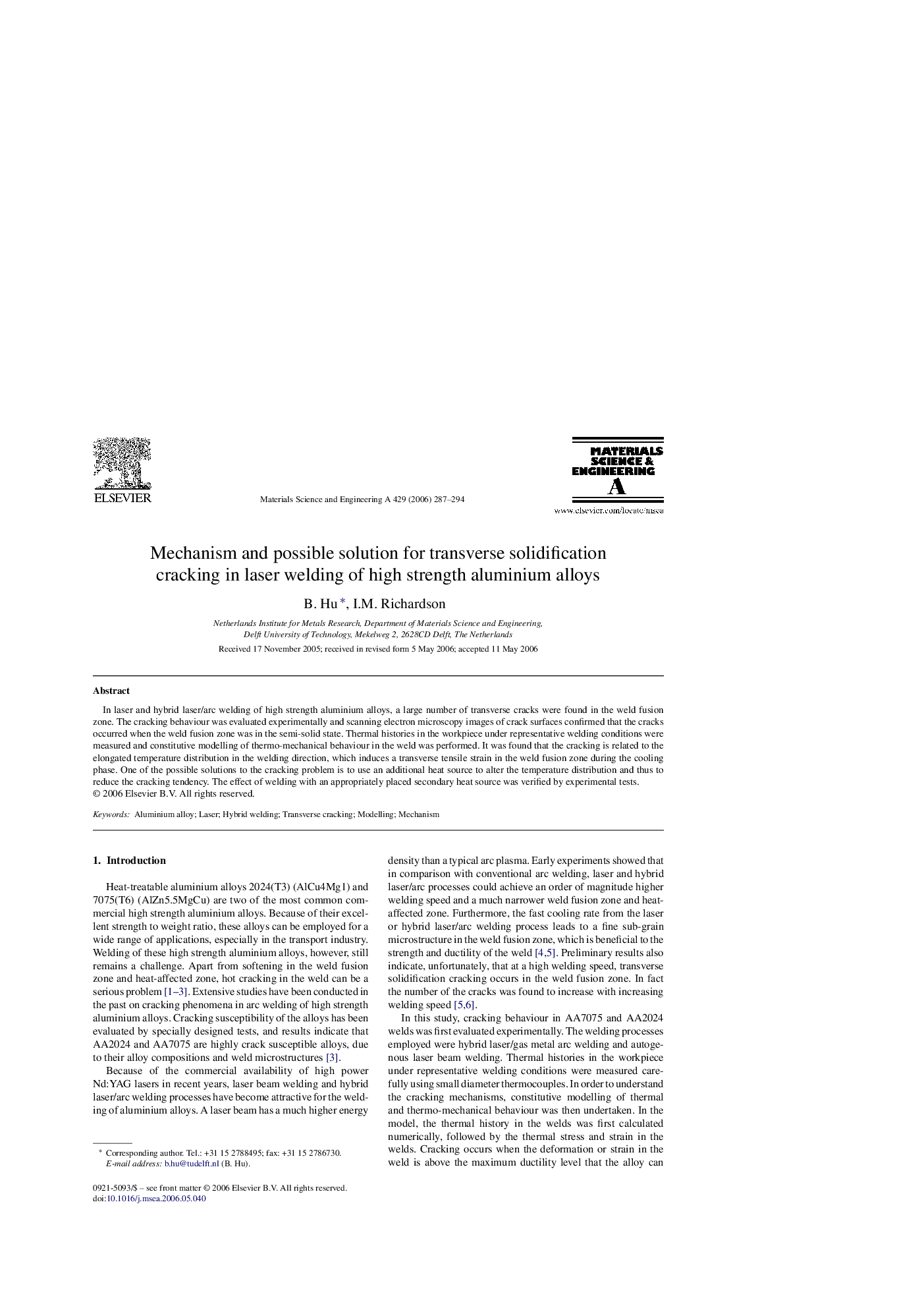| Article ID | Journal | Published Year | Pages | File Type |
|---|---|---|---|---|
| 1585399 | Materials Science and Engineering: A | 2006 | 8 Pages |
In laser and hybrid laser/arc welding of high strength aluminium alloys, a large number of transverse cracks were found in the weld fusion zone. The cracking behaviour was evaluated experimentally and scanning electron microscopy images of crack surfaces confirmed that the cracks occurred when the weld fusion zone was in the semi-solid state. Thermal histories in the workpiece under representative welding conditions were measured and constitutive modelling of thermo-mechanical behaviour in the weld was performed. It was found that the cracking is related to the elongated temperature distribution in the welding direction, which induces a transverse tensile strain in the weld fusion zone during the cooling phase. One of the possible solutions to the cracking problem is to use an additional heat source to alter the temperature distribution and thus to reduce the cracking tendency. The effect of welding with an appropriately placed secondary heat source was verified by experimental tests.
